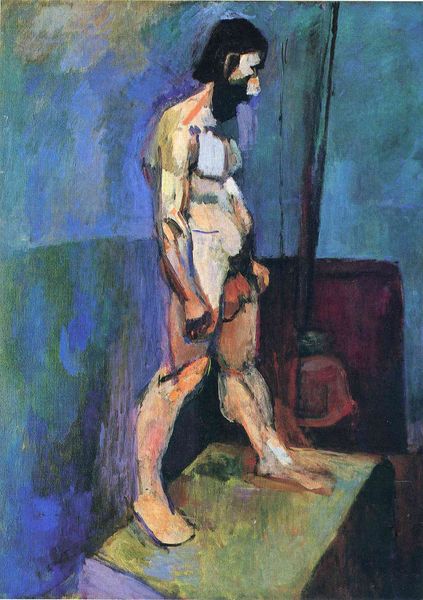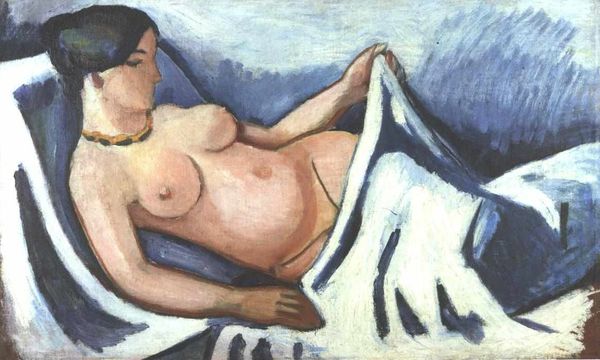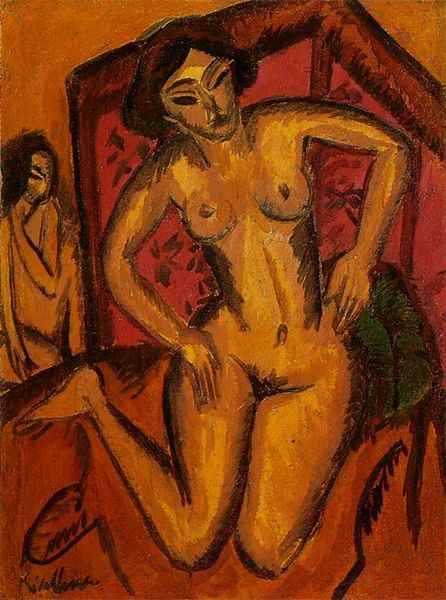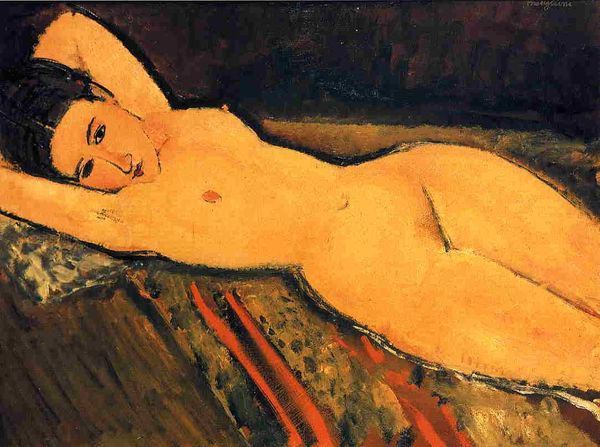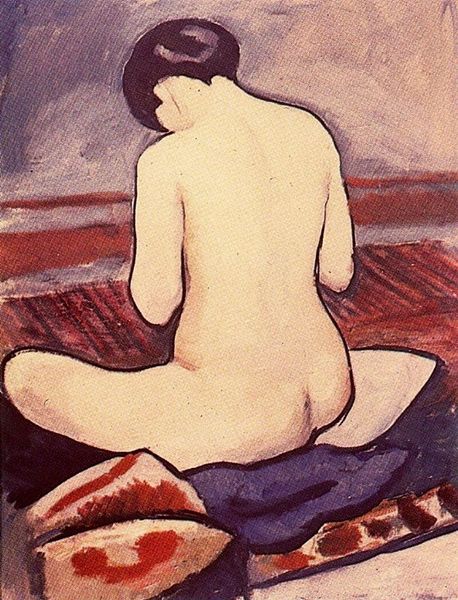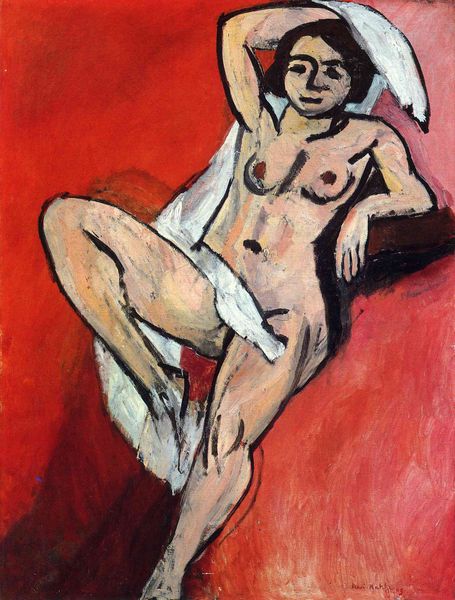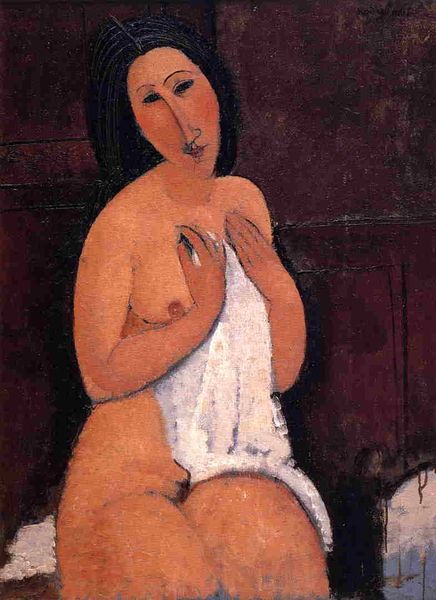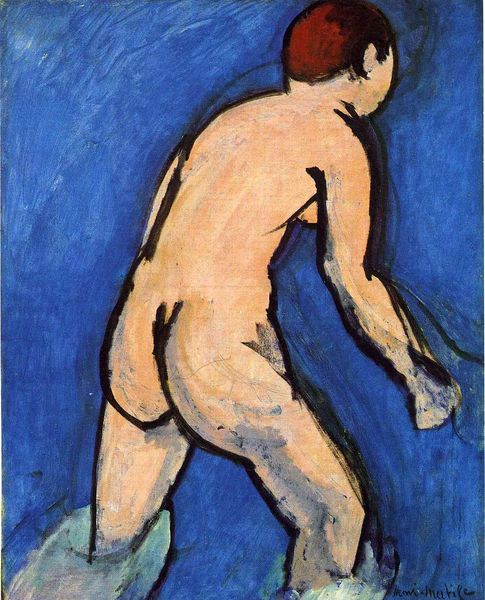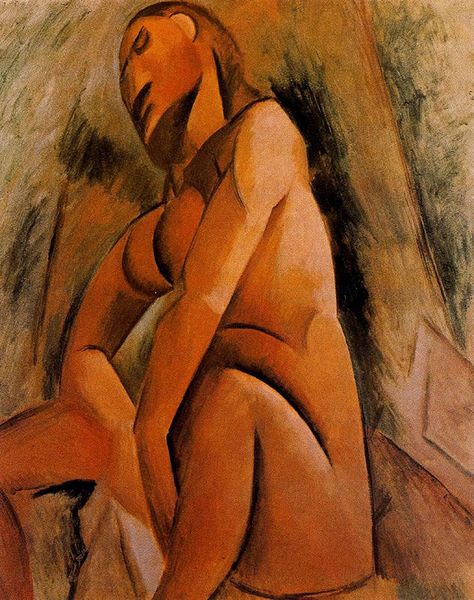
oil-paint
#
portrait
#
oil-paint
#
figuration
#
possibly oil pastel
#
oil painting
#
female-nude
#
expressionism
#
nude
#
expressionist
Copyright: Public domain
Curator: This is Amedeo Modigliani's "Seated Nude," painted in 1909. It's currently held in a private collection. What strikes you about this piece? Editor: There's an immediacy to it, almost unfinished. It feels like a fleeting glimpse, a sketch capturing a mood more than a likeness. There is also a distinct asymmetry in the posture. It evokes thoughts of Egon Schiele's portraits but softer, less… tortured. Curator: That rawness is key, I think. Modigliani’s nudes, especially those from this period, exist at the intersection of vulnerability and defiance. Considering the art world's dominant male gaze then and now, what dialogues around feminism might the paintings invoke for viewers today? Editor: Exactly. The "Seated Nude," like many nudes throughout history, must be contextualized in histories of power and objectification, a representation of the body and the construction of identity that touches upon critical theory. There is always going to be some tension and potential complicity in presenting a nude—questioning representation is critical, from Laura Mulvey onwards. It forces us to ask: Who is the subject, and who is doing the seeing? But perhaps the tilted head implies some degree of agency, however muted. Curator: The color palette itself is very somber. Blues and muted peach tones that speak to me on an emotional level. Did Modigliani feel some melancholic kinship with his subject? There is such mystery within the paint texture itself—like she almost disappears into the canvas, the boundary blurs. Editor: Melancholia is always gendered too—cultural constructions of feminine sadness and introspection versus male angst! Thinking about Modigliani through a social justice lens makes you question both the context in which these works were created and continue to be presented. Curator: Absolutely, which makes encountering this painting all the more compelling—we wrestle with so much at once. Editor: Precisely! We bring our entire socio-historical knowledge into this intimate encounter across time. Curator: I leave with the distinct impression of seeing the artist more than the sitter! Editor: I am more convinced by how crucial it is to understand the structures through which art speaks to—and often past—us.
Comments
No comments
Be the first to comment and join the conversation on the ultimate creative platform.
